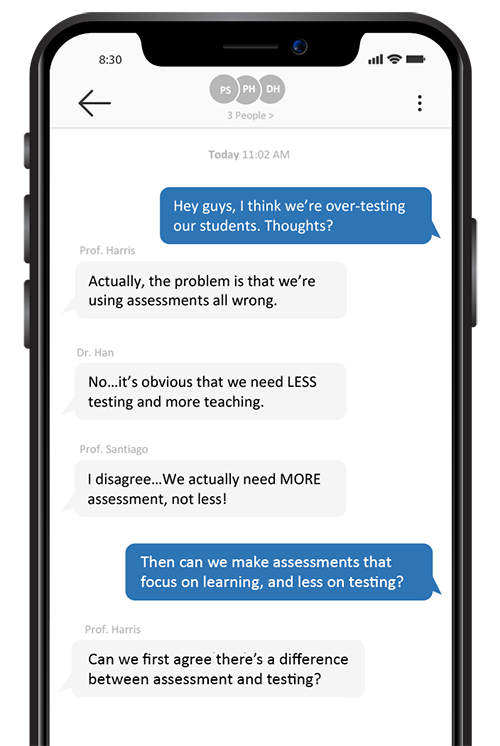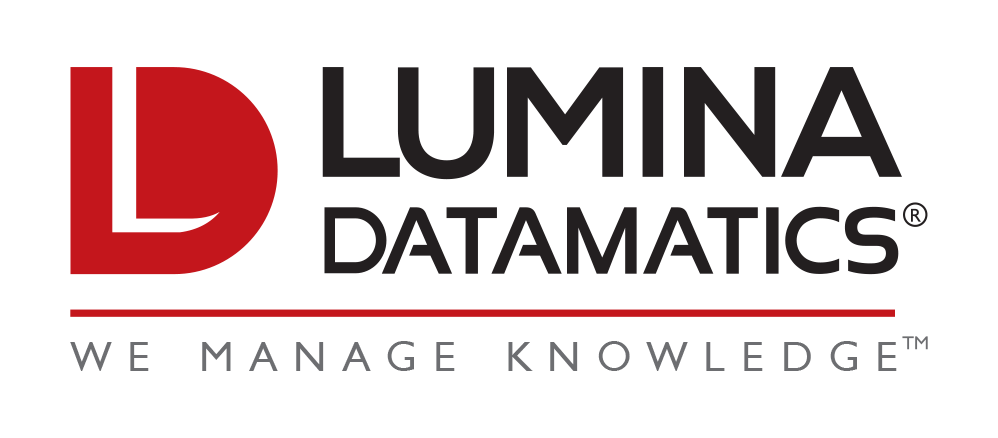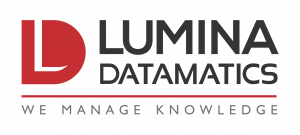 seems to have a fair amount of consensus behind it is that the creation of assessments for an Open Educational Resource (OER) course would follow the same design process as any other type of course development. However, given the current climate, many instructors have found that their standard course development processes have needed to be adjusted, if not wholly redefined.
seems to have a fair amount of consensus behind it is that the creation of assessments for an Open Educational Resource (OER) course would follow the same design process as any other type of course development. However, given the current climate, many instructors have found that their standard course development processes have needed to be adjusted, if not wholly redefined.
An Ideal Workflow
In an ideal world, an academic development team approaches Lumina Datamatics by saying something like, “We want to develop a course using OERs, and we want it to launch in six months.” Our team, of Instructional Designers, Project Managers, Technologists, and Assessment Developers then springs into action. We first facilitate a conversation around the goals for the course, and the best approach to instructional design (Backwards design? ADDIE?) that will help our client achieve those goals. This approach is largely dictated by both the subject matter and the instructional goals
Because online learning lends itself well to a competency-based approach, we typically help our development partner implement a backwards design process. We start identifying the learning objectives and devising the best strategies for assessing competency for each of these learning objectives. Then we write a set of summative assessments using the prescribed assessment strategies. Once we’re comfortable that our summative assessments do an adequate job of assessing competency, and we’re confident that we’ve analyzed for fairness and bias, we create a sequence of scaffolded formative and interim assessments to help the student prepare for these summative assessments. It’s at THIS point that we begin curating and developing learning resources that will fully prepare a student to prove their competency across the battery of assessments we’ve prepared for this course.
If this is what your course development process looks like, then read no further. You are doing everything right; your processes fit a tried-and-true model that yields proven benefits for both for the students and instructors, as well as the parameters of online learning.
Reality Interferes with Ideal
BUT… since we live in the year 2020, which many agree is a far cry away from an ideal world, our models of assessment development have been forced to adapt to a more agile format. It is through considering this reality of contemporary course development that I’d like to address those educators who find themselves in a slightly different scenario:
Let’s assume you’re a college professor, or academic chair, and you have only a few weeks to get your extremely popular college course into an online format. It’s important to you that it retains its engagement level for students, but also that it retains its intellectual rigor. But because of global travel restrictions, you have to make the course asynchronous to accommodate the fact that your student population will be spread out across multiple time zones. This presents a few challenges. A few weeks is a very short course development window, but even if you had the development time needed to author an exceptional online course, you don’t have the budget to support a robust development process. You manage to utilize some of your newfound “free time” to curate a solid collection of learning materials that contain all of the concepts that you want your students to acquire in your course. They don’t blend together perfectly, but they should provide a solid basis of understanding. You create some insightful instructional language to provide students with the context they need to absorb those learning materials, and you brainstorm a scaffolded sequence of activities to help reinforce this knowledge. The final piece of the puzzle in this process is the creation of assessments that align with your course material; unfortunately, in this situation you may find that this last piece rarely falls right into place for the course you have developed.
In this scenario, the process of course development is not wholly dissimilar to the original, idealized version. All the pieces are there, but their order and alignment to one another is not quite as seamless as you would have hoped. The last piece of course development in this scenario, the assessments, can often seem the most difficult to fit into your course. When the development timeline is abbreviated and resources are limited, it is not a coincidence that the assessments always seem to be the last piece. The learning resources provide a backbone for the course and a guiding path for instructors to follow as they develop language to intrigue and engage their students. The assessments, by necessity, will then need to be added to the course after the curation of learning materials has been completed.
One of the primary difficulties around assessment design for OER courses is the distinct lack of cohesion across the various learning resources used throughout the course. Different sources, a wide array of terminology, and even a slight variation in the presentation of concepts can lead to a tapestry of material that is very difficult to sew together with suitable assessments. While it is not difficult to find banks of OER assessment online, finding assessment material that aligns with your particular course content while also meeting at least some of the necessary assessment design principles is no easy task…but it is also not impossible. The key is adaptation.
How to Adapt
The most adaptable content in an OER course is the instructional language. A course’s instructional language helps maximize the student’s mastery of a subject matter by exposing them to the context of the course’s ideas and main objectives. The instructional language of a course connects resources to resources and those resources to assessments. It helps create a narrative thread for the course and guides students along a clear path. If you have several resources that teach a single concept in different shades, these disparate vantage points can be tied together and aligned to the overall course objectives with a few paragraphs of well-thought-out instruction. Or, say you have several OERs on a subject that all use fluctuating terminology for a particular concept. A straightforward glossary of terms can be added to your course to help mitigate any discrepancies in your final message. Both of these examples of unification can extend to help support assessment design as well.
The language of OER assessments inevitably comes with its own unique tone and style. This tone and style might not fully mesh with your course, so it is imperative to review the language used in the assessments to guarantee continuity with the voice used in your course. More important than tone or style is, of course, the material being measured in the assessments. OER assessments can be customized by adjusting terminology, reshaping answer options to align with the focus of your course resources, or by cutting out or adding in entirely new items. When time is of the essence, as it always seems to be in course development, the task of adapting a group of assessment items to your course content can be daunting. This is when it is important to review your instructional language for areas that can be broadened to incorporate more assessment opportunities or for sections that be focused in more detail to align with specific objectives of the OER assessments that have been selected for your course. Once the instructional language appropriately supports the assessments, the content being assessed can then be looped back into the course material through hints and suggestions provided via thoughtful assessment feedback.
The Importance of Feedback and Alignment
The development of relevant feedback on assessments can both keep the integrity of the OER assessments and link them back to specific points of course material. Assessment feedback will not only help students identify their course progress, but it will also reinforce the cohesive elements of your course and unite each aspect of course design into the perfectly completed picture. Further still, assessment feedback can incorporate elements of the course learning objectives, or repurpose them to deepen the alignment of assessment to the associated learning materials.
Whether you are creating assessments from scratch or adapting found OER assessments into your course, it is essential to ensure that the types of assessments you decide on will serve your end learning objectives. Remember: Alignment is key. The alignment of assessments to a course’s core concepts can be achieved by tailoring the course’s instructional language to verify that the assessed content is accessible to students and that it enhances their learning. In the current climate of online course development, the adaptability of OER content can be a double-edged sword. It can provide such a wellspring of options and permutations that creating a single course from such varied content can seem overwhelming. However, through careful attention to resource curation, the customization of instructional language, and an interwoven loop of assessment feedback, seemingly disparate pieces of course development content can be remixed to form a logical, impactful, and meaningful learning experience.
Interested in learning more about how Lumina can assist in OER curation or creation of assessment? We want to hear from you! Email Lumina to discuss this topic or request a quote, or visit our website to learn more about Lumina Datamatics.
Source
- Artwork based on Freepik





0 Comments